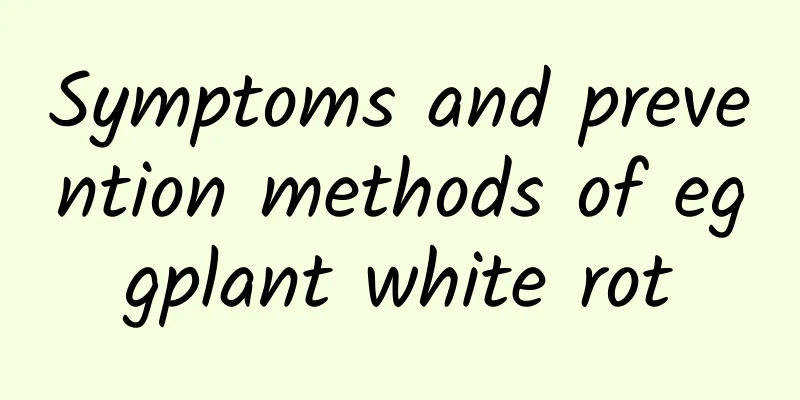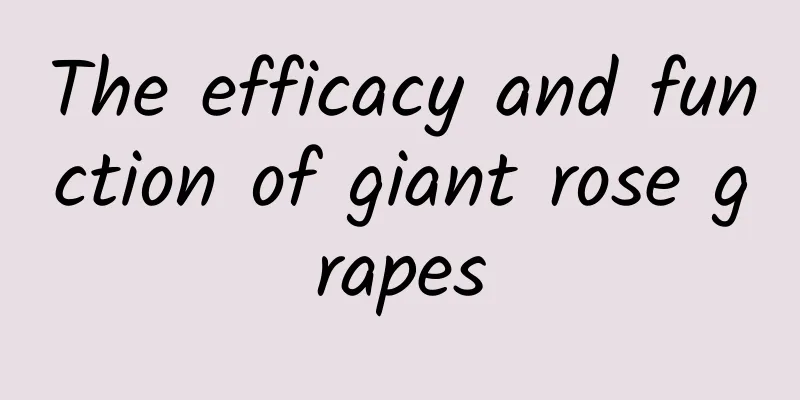Symptoms and prevention methods of eggplant white rot

|
What should we do if eggplant white rot occurs during the eggplant planting process? How can we better prevent and control it? Eggplant white rot SymptomsEggplant white rot mainly harms the base of the stem. The diseased part initially turns brown and rots, and produces white and shiny silky mycelium and yellow-brown rapeseed-like small sclerotia. In severe cases, the petioles and leaves wilt, and finally dry up and fall off or the whole plant dies. Morphological characteristics of pathogensSclerotium rolfsii Sacc. is called neat sclerotium, belonging to the subdivision of Ascomycetes. The sexual state is Athelia rolfsii (Curiz)Tu.&Kimbrough. It is called Athelia rolfsii, belonging to the subdivision of Basidiomycetes. The morphological characteristics are shown in Sclerotium rolfsii. The optimum temperature for the development of the pathogen is 32-33℃, the highest is 40℃, the lowest is 8℃, and the optimum pH is 5.9. Transmission routes and conditions of disease onsetIt mainly overwinters in the soil as sclerotia or mycelium. Under suitable conditions, sclerotia germinate and produce hyphae, which invade from the base of the host stem or the root. The incubation period is 3 to 10 days. After the central diseased plant appears, the surface hyphae spread to the surrounding areas. The optimum temperature for the disease is 30℃, especially high temperature and timely sunny and rainy weather, which is conducive to the germination of sclerotia. The disease is more severe in continuous cropping land, acidic soil or sandy land. Under summer irrigation conditions, sclerotia die after 3 to 4 months. The disease is prone to occur in June and July when the temperature is hot and humid. Prevention and treatment methods(1) Rational fertilization and watering. Apply sufficient decomposed organic fertilizer before transplanting. Choose large seedlings and healthy seedlings for transplanting. Water once in the morning on a sunny day 3 to 4 days after transplanting, and drain the moisture in time until the eggplants "open their eyes" before watering and topdressing. Eggplants need less water before they swell, so no watering is required. After they swell, they need water and more watering is required. Generally, mixed water (i.e. topdressing water) is applied once 5 to 6 days after harvest, and then clear water is applied once. Watering must be done on a sunny morning, with small amounts of water applied frequently. After watering, till the soil to allow air to circulate and facilitate root growth. In the five greenhouses managed in this way, the disease rate of eggplant white silk leap plants was less than 1%, while the disease rate of the eight greenhouses that were transplanted suddenly reached 10% to 20%. (2) Remove the central diseased plants. The central diseased plants are a signal of the occurrence of the disease. They must be accurately identified, removed early, buried deep or burned, and mixed with lime or 15% triadimefon wettable powder at a ratio of 1:120, and sprinkled on the diseased holes and surrounding soil for disinfection. For the diseased fields, 800 times diluted 20% methyl tolclofos emulsifiable concentrate or 2000 times diluted 20% triadimefon emulsifiable concentrate can be used. For every 667 square meters, add 4 grams of agricultural streptomycin sulfate and 4 milliliters of 15% oxadiazine aqueous solution and spray on the ground, fill holes or drench 1 to 2 times, once every 15 to 20 days. (3) Strengthen cultivation management. Cultivation management is closely related to the occurrence of diseases. Planting should be done according to the size of the seedlings. Transplanting should be done in the morning on a sunny day with warm soil. Water the nutrient pots of the transplanted seedlings in advance to make the soil clump together and not separate the roots. The land should be prepared carefully, the ridges should be flat, and well-rotted organic fertilizers should be added. Ventilation should be provided in time to remove moisture and exchange gases. The planting holes should be sealed with fine soil, and the tarpaulin should be removed early and covered late to increase the light exposure time. The tarpaulin should be removed on rainy days to ensure scattered light. These management techniques can promote good plant growth and improve disease resistance. |
<<: Eggplant Sclerotinia Symptoms and Prevention Methods
>>: How to make dried eggplant How to eat dried eggplant
Recommend
Peanut sesame porridge
How much do you know about peanut sesame porridge...
How is Jetstar Japan? Jetstar Japan reviews and website information
What is Jetstar Japan? Jetstar Japan is a low-cost...
What are the benefits of eating Linglong fruit?
Many people have never eaten Linglong fruit, and ...
The efficacy and effects of salicylic acid and the harm of salicylic acid
People who often use cosmetics know that many cos...
What are the laws of anti-radiation foods? Which foods can eliminate radiation?
Computers and mobile phones are essential electro...
How to grow azalea? Cultivation techniques of azalea
Rhododendron is one of the top ten famous flowers...
What is Space Battleship Yamato like? Space Battleship Yamato review and website information
What is the website of "Space Battleship Yama...
How is the University of Pennsylvania Law School? University of Pennsylvania Law School reviews and website information
What is the website of the University of Pennsylva...
How is Saudi Arabian Airlines? Saudi Arabian Airlines Reviews and Website Information
What is Saudi Arabian Airlines? Saudi Arabian Airl...
How is Yeoin? Yeoin review and website information
What is Yeoin? Yeoin is the largest cosmetics shop...
How to cook gourd
Today I will tell you about several common method...
What is Toronto FC like? Toronto FC reviews and website information
What is the website of Toronto Football Club? Toro...
Nutritional value, efficacy and function of fish
Fish is a kind of meat that people often eat in l...
Medicinal effects and functions of rice flower
Rice flower is a plant of the Ericaceae family, m...
Homemade bean stewed noodles
When I went back to my hometown some time ago, my...









